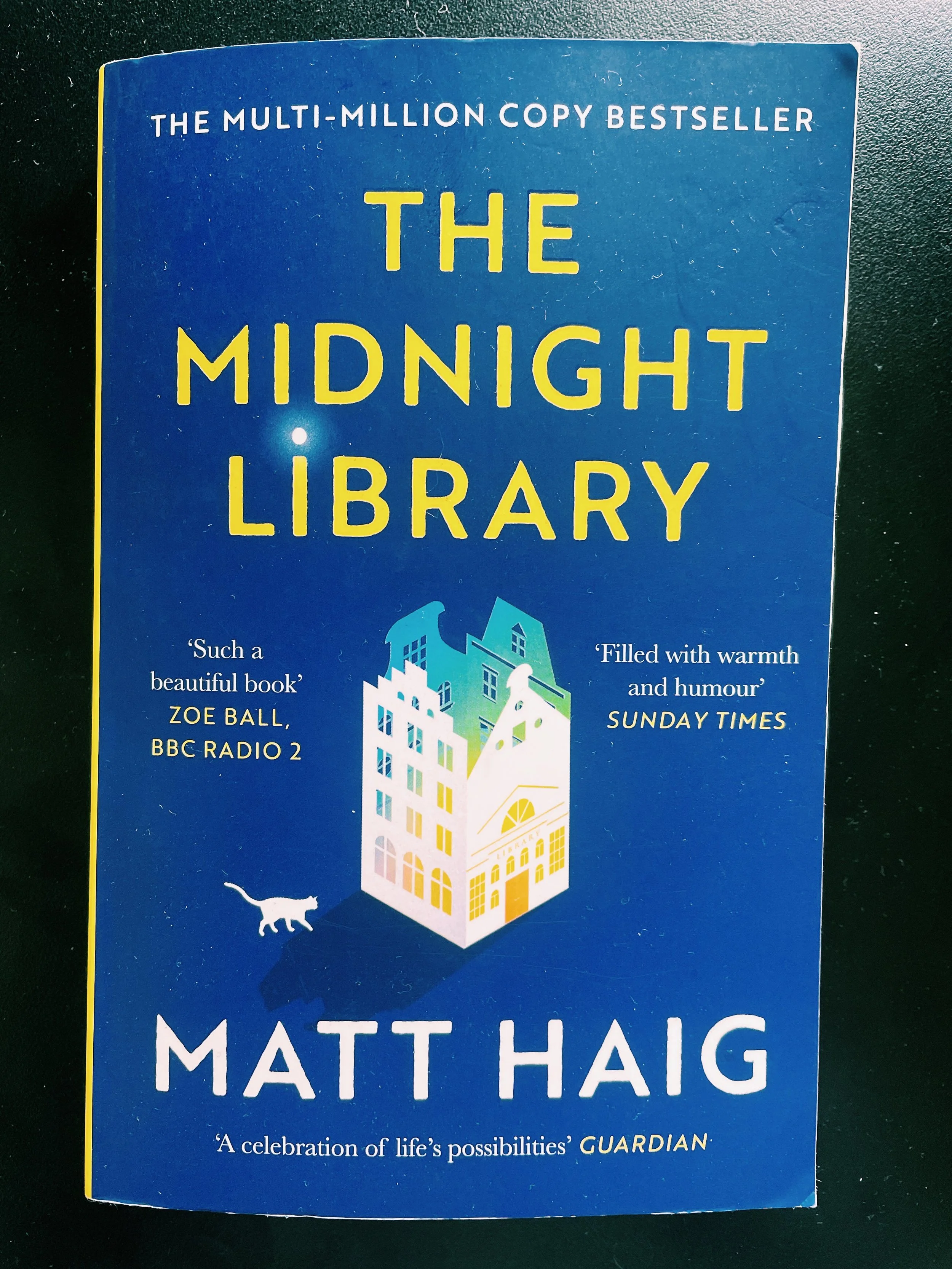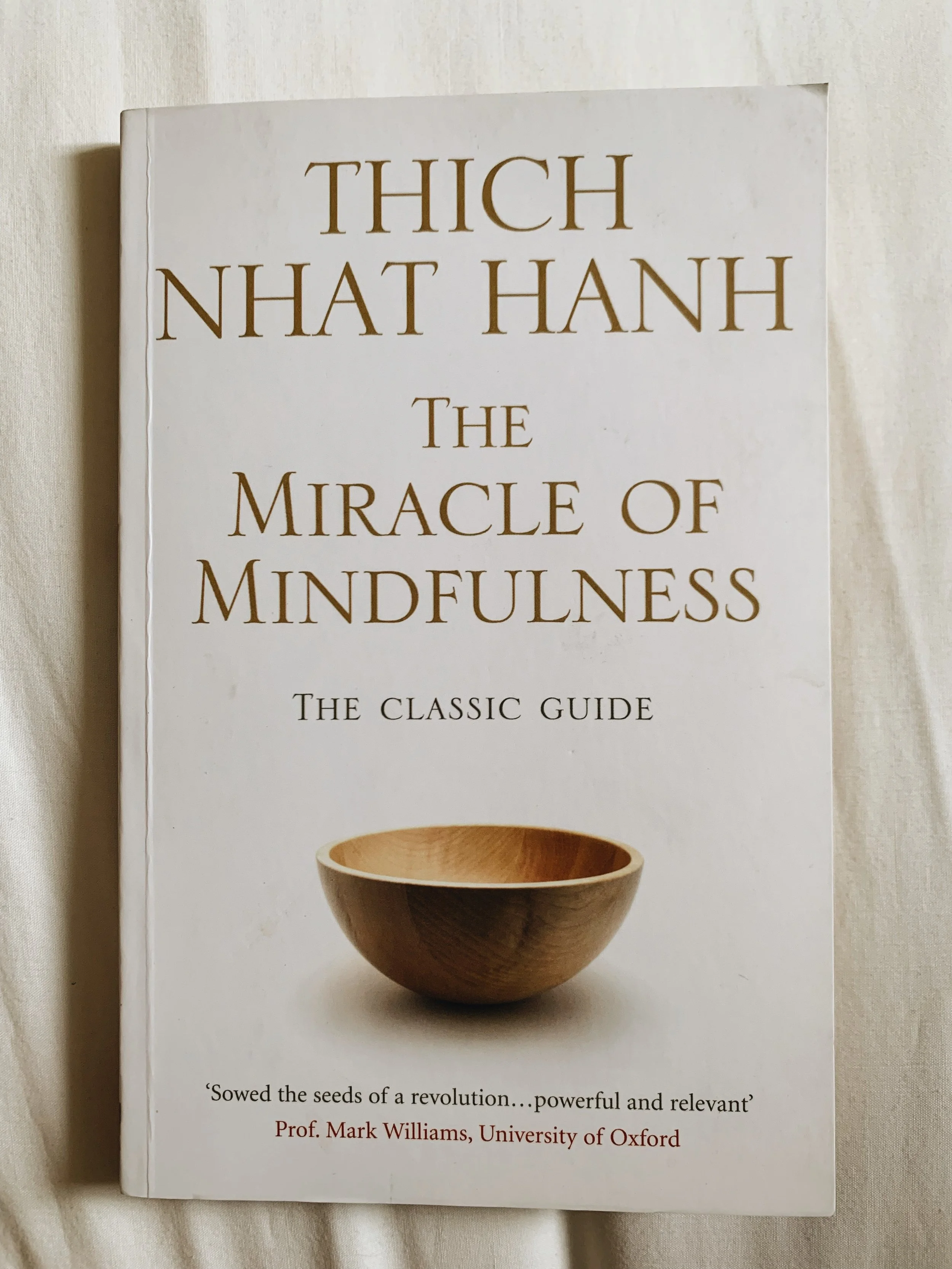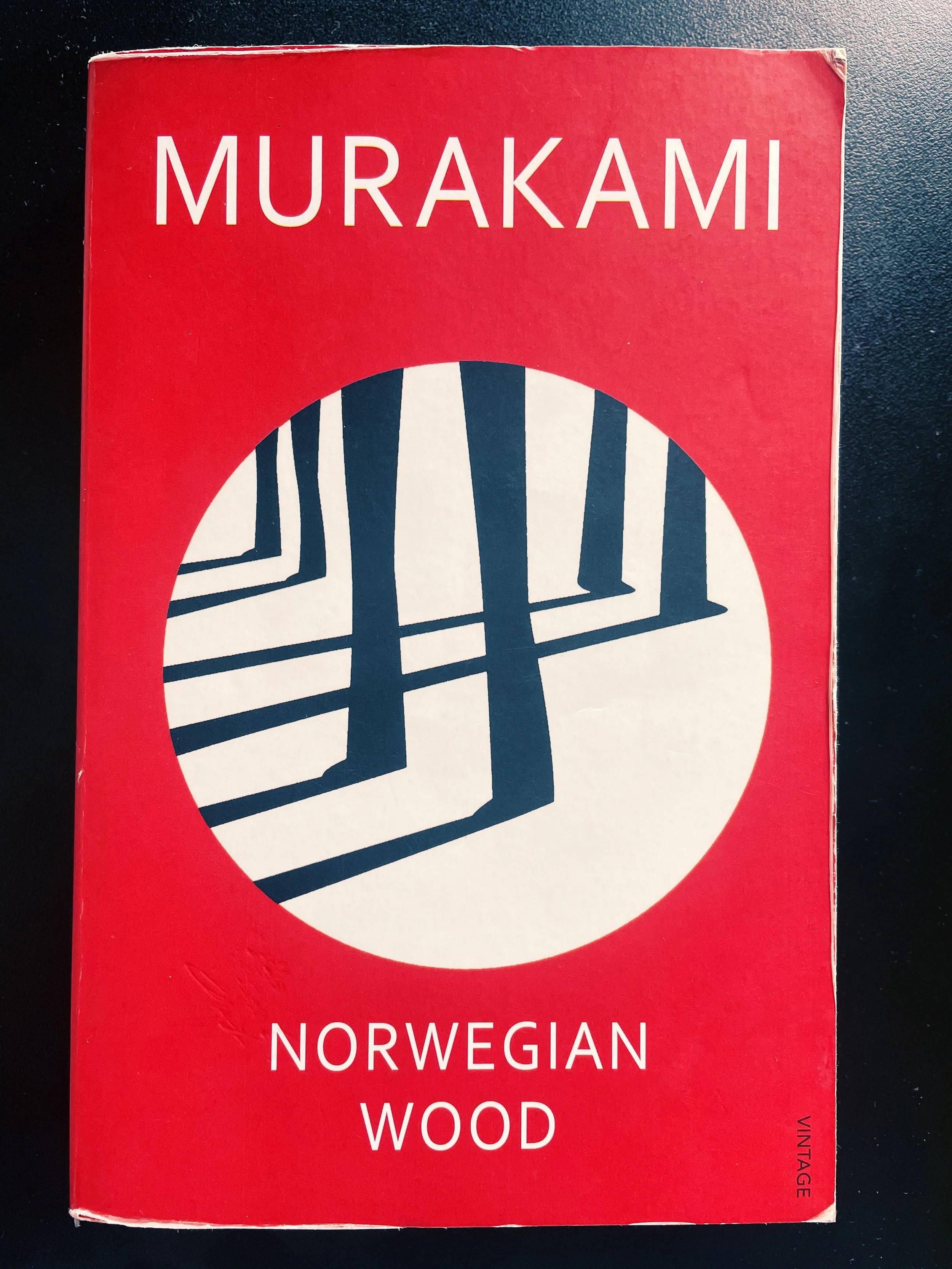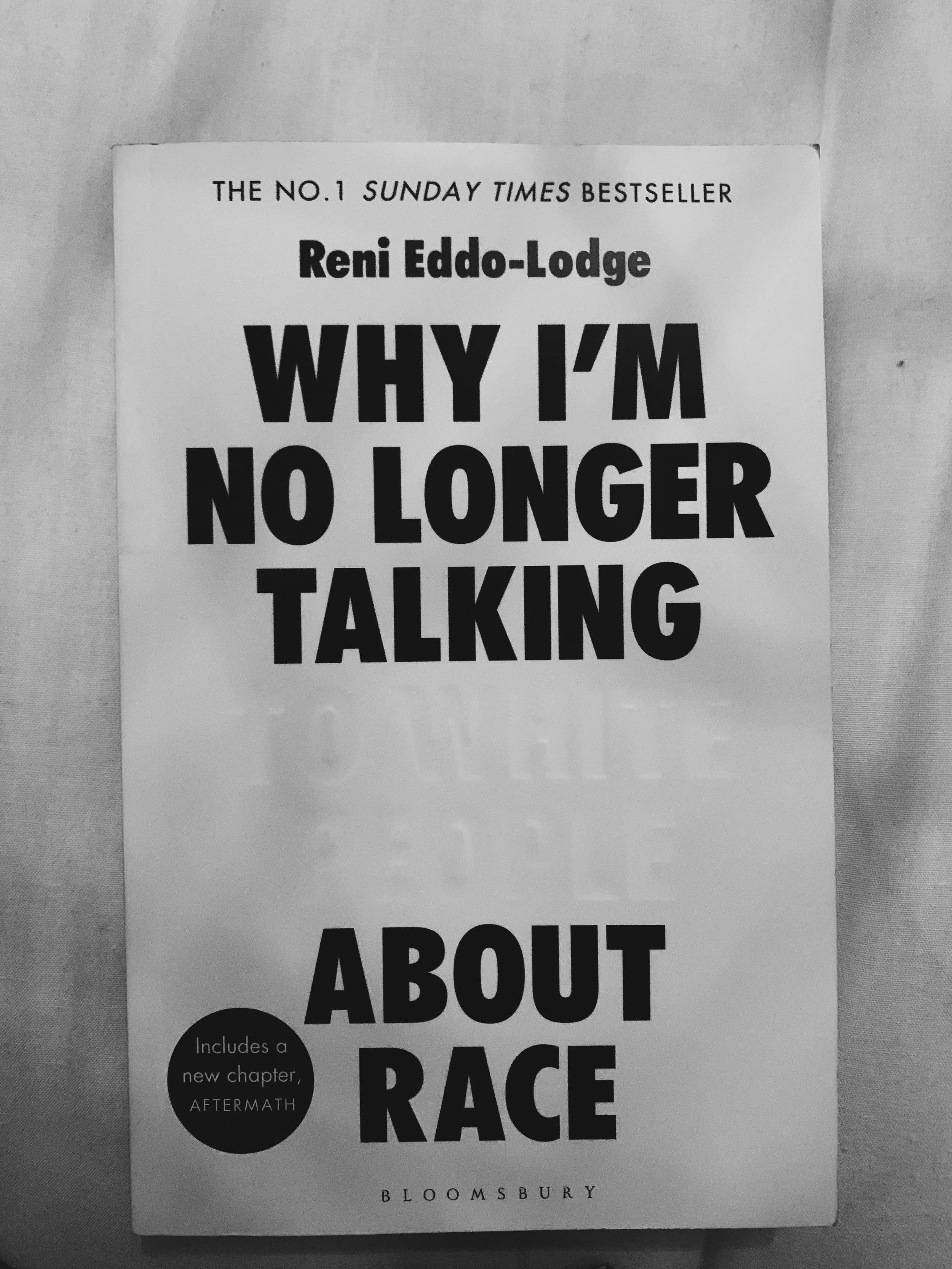June 2021 – June 2022: My Top 5 Reads This Year
- The Midnight Library -
- Kafka on the Shore -
- The Miracle of Mindfulness -
- Norwegian Wood -
- Why I’m No Longer Talking to White People About Race -
- Currently reading: The Death Instinct -
In the past year, I have tried to make time and a conscious effort to read topics that interest and inspire me. After graduating from university, a weight was lifted. One that involved hearty, rigid textbooks, articles, and research papers from professors, sociological theorists, and the occasional fellow students’ work. It's untrue to say that I didn’t enjoy them at the time (most of them) I was aware of the meticulous research needed for the course I studied. But once that was completed, an overbearing thought dawned on me. Was that it? It seemed as if I had more to learn, review and analyse. That was it. In a blink of an eye, university was done, along with the deadlines, readings and analysis that followed. It discombobulated me for a while. For someone who found pleasure in reading, writing, and constantly evaluating (overthinking? LOL) it terrified me. Introspectively, now, it was the expansion of nothingness that scared me. Then Perspective arrived at the front door with a hand-delivered message: I could do whatever I wanted – read whatever I wanted. That’s when I started this blog, and why I decided to fall back in love with the simplicity of picking up an intriguing book to dive into with a peppermint tea beside me!
The Midnight Library
by Matt Haig
Between life and death there is a library, and within that library, the shelves go on forever. Every book provides a chance to try another life you could have lived. To see how things would be if you had made other choices . . . Would you have done anything differently, if you had the chance to undo your regrets?
Philosophical. Witty. Real.
This book draws more than just the reality of the numbness of life sometimes, but the reflective nature that we subconsciously have within all of us when given the time. Nora, the protagonist’s character is someone that I personally believe, many of us can relate to. Especially during these times, when social expectations deprive us of the true meaning of life, and how to appreciate it.
The philosophical quotes that are entrenched in the book’s lessons throughout each chapter are written simply, and thus, enjoyable to read, despite the depressing reality of the character’s situation.
It appeared as a ‘self-help’ storybook, without the pretentiousness of one, and with more eloquence and whimsicalness.
“We only need to be one person.
We only need to feel one existence.
We don't have to do everything in order to be everything, because we are already infinite. While we are alive we always contain a future of multifarious possibility.”
The Midnight Library
Kafka on the Shore
by Haruki Murakami
Kafka on the Shore is powered by two remarkable characters: a teenage boy, Kafka Tamura, who runs away from home either to escape a gruesome oedipal prophecy or to search for his long-missing mother and sister; and an aging simpleton called Nakata, who never recovered from a wartime affliction and now is drawn toward Kafka for reasons that, like the most basic activities of daily life, he cannot fathom.
As their paths converge, and the reasons for that convergence become clear, Haruki Murakami enfolds readers in a world where cats talk, fish fall from the sky, and spirits slip out of their bodies to make love or commit murder.
I love when psychological theories find their way into the stories I am reading. This is a reoccurring theme in the books I have come to adore reading. It gives it a sense of realness. This one was no different. Without spoiling too much, Freudian notions in this novel are not the most absorbing part merely a moment in this masterpiece of storytelling. It is both an effortless read yet intensely ambiguous to the point where it left me strangely content and perplexed when I closed the book.
Murakami describes the “shore” in Kafka on the Shore as the border between the conscious and the unconscious minds. It’s “a story of two different worlds, consciousness, and unconsciousness. Most of us are living in those two worlds, one foot in one or the other, and all of us are living on the borderline. That's my definition of human life.”
Personally, the metaphors present much of the conscious and subconscious nature of Tamura and Nakata and how the exploration of the self is a very messy endeavour.
“And once the storm is over, you won’t remember how you made it through, how you managed to survive. You won’t even be sure, whether the storm is really over. But one thing is certain. When you come out of the storm, you won’t be the same person who walked in. That’s what this storm’s all about.”
The Miracle of Mindfulness
By Thich Nhat Hanh
In this beautiful and lucid guide, Zen master Thich Nhat Hanh offers gentle anecdotes and practical exercises as a means of learning the skills of mindfulness--being awake and fully aware. From washing the dishes to answering the phone to peeling an orange, he reminds us that each moment holds within it an opportunity to work toward greater self-understanding and peacefulness.
“In mindfulness, one is not only restful and happy but alert and awake. Meditation is not evasion; it is a serene encounter with reality.”
This is more of a collection of letters that Thich wrote to and received from a friend that incorporates Buddhist teachings such as ‘mindfulness’ in daily tasks. He mentions the importance of realising that there is beauty in mundane tasks and that is mirrored in Thich Nhat Hanh’s writing. Overall, I will never forget the present activity of being intentional with being our rawest selves.
“People usually consider walking on water or in thin air a miracle. But I think the real miracle is not to walk either on water or in thin air, but to walk on earth. Every day we are engaged in a miracle which we don't even recognize: a blue sky, white clouds, green leaves, the black, curious eyes of a child—our own two eyes. All is a miracle.”
Norwegian Wood
By Haruki Murakami
Toru, a quiet and preternaturally serious young college student in Tokyo, is devoted to Naoko, a beautiful and introspective young woman, but their mutual passion is marked by the tragic death of their best friend years before. Toru begins to adapt to campus life and the loneliness and isolation he faces there, but Naoko finds the pressures and responsibilities of life unbearable. As she retreats further into her own world, Toru finds himself reaching out to others and drawn to a fiercely independent and sexually liberated young woman.
“I want you always to remember me. Will you remember that I existed, and that I stood next to you here like this?”
I am a sucker for a romance novel. Except this is much more than that.
Murakami quickly became one of my favourite authors this year, from his eccentrically unusual Kafka on the Shore to the insightful realism within this book – his imagination and wordsmanship are to die for.
Every part of this book was memorable. I am still surfing through the ripples of the first time I opened it. Though this was one of Murakami’s more straightforward reads, the subjects were heavy and disturbing. Nonetheless, each character fascinated me, to where I was invested in their own stories. Hoping to receive a story from their point of view, due to the concise and obscure descriptions of their personal lives. Yet, that may be the point of their roles, similarly to that of every presentation of each and every person we meet – ever. The complexity of human beings is that we only see a part of them, and never the whole story. This is what Murakami captures.
“Memory is a funny thing. When I was in the scene, I hardly paid it any mind. I never stopped to think of it as something that would make a lasting impression, certainly never imagined that eighteen years later I would recall it in such detail. I didn't give a damn about the scenery that day. I was thinking about myself. I was thinking about the beautiful girl walking next to me. I was thinking about the two of us together, and then about myself again. It was the age, that time of life when every sight, every feeling, every thought came back, like a boomerang, to me. And worse, I was in love. Love with complications. The scenery was the last thing on my mind.”
Why I’m No Longer Talking to White People About Race
By Reni Eddo-Lodge
In 2014, award-winning journalist Reni Eddo-Lodge wrote about her frustration with the way that discussions of race and racism in Britain were being led by those who weren't affected by it. She posted a piece on her blog, entitled: 'Why I'm No Longer Talking to White People About Race' that led to this book.
Exploring issues from eradicated black history to the political purpose of white dominance, whitewashed feminism to the inextricable link between class and race, Reni Eddo-Lodge offers a timely and essential new framework for how to see, acknowledge and counter racism. It is a searing, illuminating, absolutely necessary exploration of what it is to be a person of colour in Britain today.
“Every voice raised against racism chips away at its power. We can't afford to stay silent.”
It took a while for me to finally read this book, despite the increase in its popularity last year due to the Black Lives Matter movement that spread across the globe at an accelerated rate whilst the whole world was isolated, glued to their phone and laptop screens, drowning in injustices broadcasted on social media. It felt as if I was constantly doomscrolling. It was too much to handle at the time. After a few months, I finally gained the courage to start reading, and it informed me, angered me, and left me more inclined than ever to keep trying to be understanding, importantly to become better. To become a stronger person at times of societal struggle.
Eddo-Lodge stripped many vital discussion topics about race to their elementary form. The simplification of the questions, answers, examples, analysis and the necessity of progression from within our communities, cities, and governments is touched on, with impactful rawness. Every single person needs to read this. It opened my eyes, and it will help open yours too.
“If you are disgusted by what you see, and if you feel the fire coursing through your veins, then it's up to you. You don't have to be the leader of a global movement or a household name. It can be as small scale as chipping away at the warped power relations in your workplace. It can be passing on knowledge and skills to those who wouldn't access them otherwise. It can be creative. It can be informal. It can be your job. It doesn't matter what it is, as long as you're doing something.”
Though it has taken me some time, I am glad that I took my time to reach for this from the shelf. It is not light, and it is not written to be. It is powerful, insightful and necessary. It cannot be ignored. I highly recommend those who have the time to spare a few minutes in the day to discover more by reading this.
“Not seeing race does little to deconstruct racist structures or materially improve the conditions which people of colour are subject to daily. In order to dismantle unjust, racist structures, we must see race. We must see who benefits from their race, who is disproportionately impacted by negative stereotypes about their race, and to who power and privilege is bestowed upon - earned or not - because of their race, their class, and their gender. Seeing race is essential to changing the system.”
CURRENTLY READING:
The Death Instinct
By Jed Rubenfeld
Under a clear blue September sky, America's financial center in lower Manhattan became the site of the largest, deadliest terrorist attack in the nation's history. It was September 16, 1920. Four hundred people were killed or injured. The country was appalled by the magnitude and savagery of the incomprehensible attack, which remains unsolved to this day.
A sequel to The Interpretation of Murder – my favourite crime, historical, psychological thriller. One-third of the way through The Death Instinct, I highly recommend these novels for anyone who appreciates novels that incorporate fictional characters, storylines to true historical events, alongside accurate assimilations of psychological, social, and philosophical concepts.
“There is no mystery to happiness. Unhappy men are all alike. Some wound they suffered long ago, some wish denied, some blow to pride, some kindling spark of love put out by scorn - or worse, indifference - cleaves to them, or they to it, and so they live each day within a shroud of yesterdays.
The happy man does not look back. he doesn’t look ahead. he lives in the present. but there’s the rub. The present can never deliver one thing: meaning. The ways of happiness and meaning are not the same. to find happiness, a man need only live in the moment; he need only live for the moment.
But if he wants meaning - the meaning of his dreams, his secrets, his life - a man must reinhabit his past, however uncertain.
Thus, nature dangles happiness and meaning before us all, insisting only that we choose between them.
What have you chosen: happiness or meaning?”





